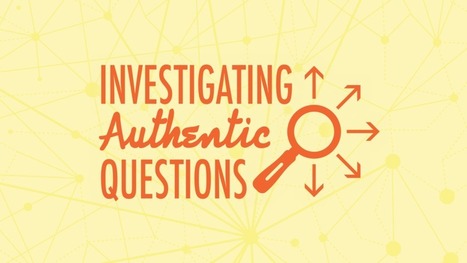Let’s take a look at sample projects and some of the hottest apps for
showing, explaining, and retelling. These tools can turn students into
teachers and are great for sharing their answers to a project’s driving
question.
|
|
Scooped by Beth Dichter |
This is the final post of three (from Tony Vincent) where it shares tools that allow students to become the teacher as they create and present the final project (as in project-based learning). The first two posts are Crafting Questions That Drive Projects and Investigating Authentic Questions.
The post is divided into the sections listed below.
* Audience is the Key, where he shares why knowing your audience is important.
* Samples Really Help. He discussed why samples help, and reminds us that we can find samples online which the students may learn from. There are also links to quite a few resources in this section.
* See These Samples. Yes, he has included samples within the post. You will find six examples of projects for elementary school, middle school and high school! He also has requested that folks share samples from their students so he can share them online.
* Cool Tools. This is a very robust section where he provides a lengthy list of tools, and divides it into three sections: Slideshows & Visuals, Audio & Video, and Books & Comics. Many of the tools listed here are free and many run on a variety of platforms. For each tool he lists there is a short description and a list of platforms it runs on. He also provides a link to an infographic he designed called Show What You Know Using Web and Mobile Apps. This shares iPad apps and is a great resource.
* Make it Sticky. In this section he discusses what makes a project "sticky" (and the research that supports this). What is a sticky idea? "One that an audience can understand, remember, and retell." This section also includes a video that shares resources for images (as well as a transcript with links).
* So Refined. This sections explores how we can set our students up for success.
one that an audience can understand, remember, and retell
*Assessing It. This section discusses assessment and provides links to websites that provide rubrics and checklists. There is also a video from Edutopia, that looks at how to embed assessments throughout the project.
* Getting the Word Out. Students are proud of their product and need to share it. This sections shares resources that allow you to share the work of your students, or better yet, allow students to share their work online. Some examples are provided
* Reflect On It. As educators we are often asked to reflect on your work. Provide time for students to do this also.
* You Know Better Than Anyone. Remember Project-Based Learning takes time, and lots of juggling. There is some great advice on this here.
This post, along with the two earlier posts, provide so many resources for those who may be new to Project-Based Learning, or for those who have been using it and would like additional resources. Have fun exploring all three and share those final projects online for others to view.



 Your new post is loading...
Your new post is loading...








adicionar a sua visão ...
Really great resource!
Thx Beth Dichter